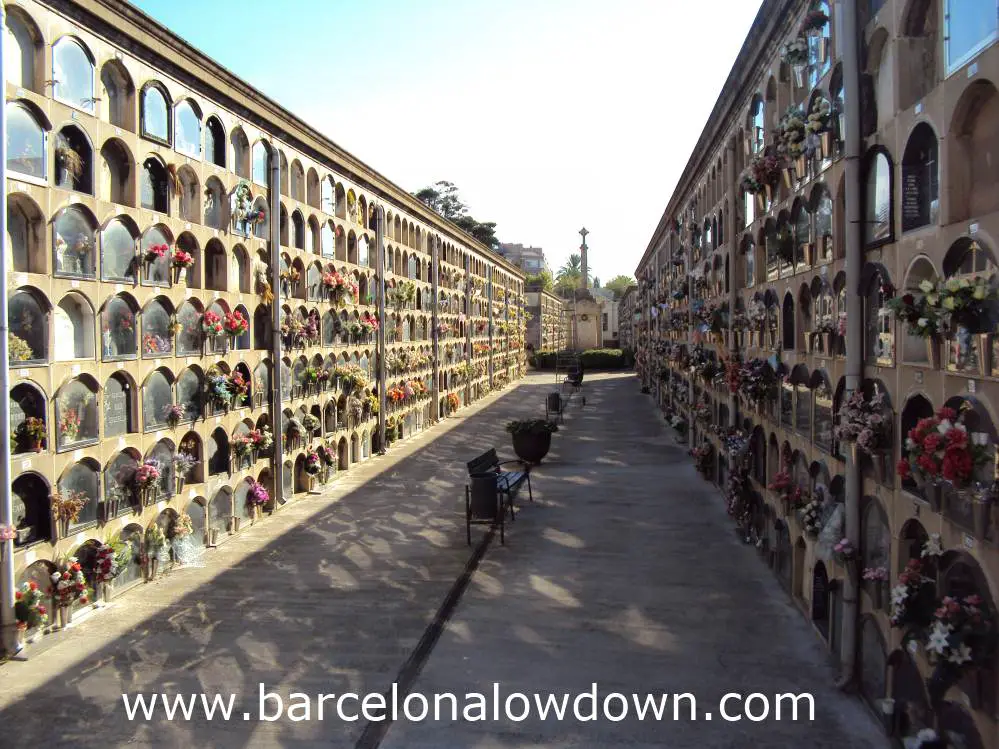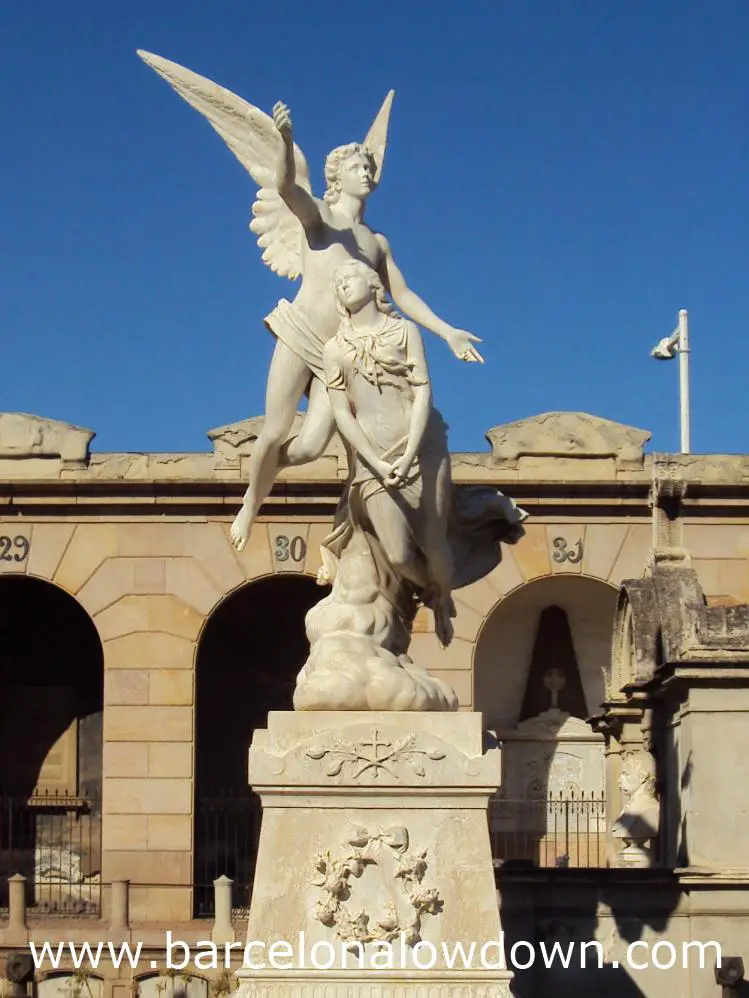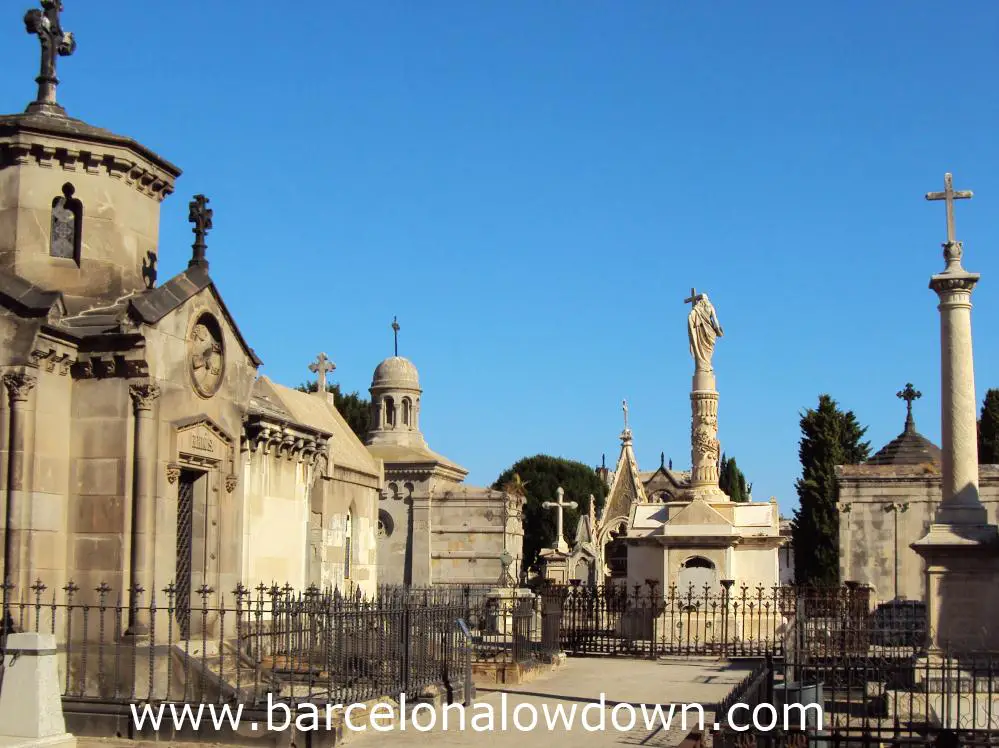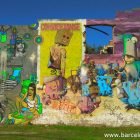
Poblenou’s Cemetery (Cementiri de Poblenou / Cementiri de l’Este) was built in the mid 18th Century and then rebuilt and extended during the 19th Century.
It is divided into 3 sections. The first of which is a labyrinth of 7 story high burial niches typical of Spanish cemeteries.
The second section is full of extravagant Neoclassical and Neo-Gothic tombs, mausoleums and Gothic style chapels built by Barcelona’s richest families.
The third section is a mixture of niches, monuments and the “fossar” or common grave where Barcelona’s poor were buried.
The best known statue is the Kiss of Death which adorns the grave of Josep Llaudet. The statue was designed by Joan Fontbernat and sculpted by Jaume Barba’s workshop in 1930. In my opinion this slightly disturbing work of art alone justifies a visit to the cemetery.


There are however numerous other statues which are well worth seeing.
Be sure to pick up a free map at the entrance with a suggested route for visitors. Unfortunately the map doesn’t contain much information about the statues apart from the date they where built and the artist. Instead there’s a QR Code which links to the cemetery’s website with more information about each of the 30 tombs visited.


Number 6 on the route is the tomb of the “Santet” or little saint. Francesc Canals i Ambrós died trying to extinguish a fire in a neighbour’s home in 1899 at the age of 22.
Apart from being well known in the neighbourhood for his selfless acts, he was also said to have supernatural powers. After his death, neighbours started to visit his tomb to pray and leave offerings.
His remains where later moved to their current location which has several empty niches surrounding it where people leave photos, notes and flowers.

At a leisurely pace, the route through the cemetery takes about an hour to complete. It’s also worth spending some time exploring.
In addition to the Neoclassical, Neo-Gothic and Art Nouveau statues, there are 2 modern statues which caught my eye. One is a statue of a young man complete with sunglasses and what looks like a bottle of bourbon.
History of Poblenou Cemetery
Poblenou cemetery dates back to 1775 and was the first cemetery built outside the city walls. The reason was simple, in the 18th Century Barcelona was overcrowded and the common graves next to the city’s parish churches had become a health hazard.
The cemetery was destroyed when Barcelona fell to the Napoleonic Army in 1817 and rebuilt and expanded in 1819.


Location
Carrer Taulat 2, Barcelona
How to get there:
The nearest metro is “Llacuna” on the yellow line (L4).
As you come out of the metro, follow Carrer Ciutat de Granada 4 blocks to the East until you come to the cemetery wall, follow the wall round to the right until you come to the entrance.
Opening times:
Monday to Sunday from 08:00 to 18:00
Entrance fee:
FREE ENTRY
Information in English?
Yes, the free map/leaflet and the website linked by QR Code both have English language sections.
Other attractions nearby:
The Rambla de Poblenou
The Agbar Tower
Museum Can Framis
Mar Bella Beach
Port Olimpic (Olympic Marina)
Map
Carrer Taulat 2, Barcelona, Spain




